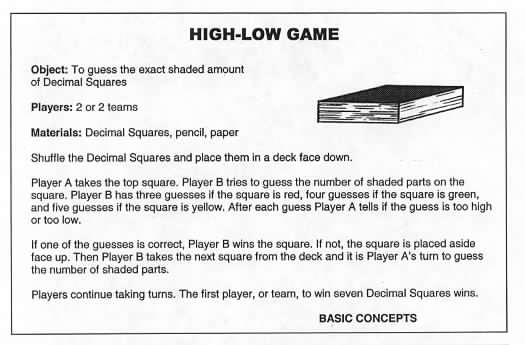.
.
Ask which yellow squares have equivalent red squares and which have equivalent green squares. Ask each person to select two squares with the same shaded amount and write a verbal description of the equality without using decimals. Ask a few to read their descriptions. For example the green square with 45 shaded parts out of 100 has the same amount of shading (is equal to) the yellow square with 450 shaded parts out of 1000.
.
